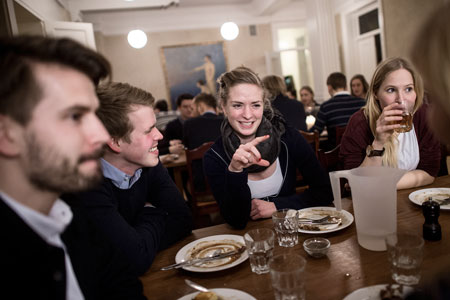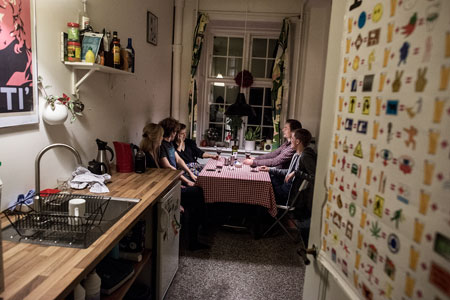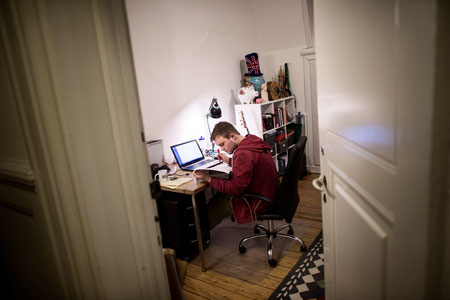The statutes of G. A. Hagemanns Kollegium (Hall of Residence) on Østerbro in Copenhagen state that 75 per cent of residents are to be DTU students—and 50 per cent women.
The fashionable embassy district in the heart of Copenhagen should give the first hint: G. A. Hagemanns Kollegium is not like most halls of residence. When you step through the door and make your way through the entrance hall, it is like strolling back through time. The ceiling is high, there is a beautiful piano in the corner, and the walls are lined and mahogany cabinets stocked with books and art.
Four large paintings decorate the walls, the most famous of which is almost certainly En Bjergbestigerske (A female mountaineer) painted by the famous Danish artist J.F. Willumsen in 1904. The painting was originally commissioned by Gustav Adolph Hagemann, the founder of the hall of residence, who was an engineer, a businessman and President of Den Polytekniske Læreanstalt (the College of Advanced Technology) in the period 1902–1912.
To view the painting, please click here.

A progressive figure
G.A. Hagemann was a progressive figure for his time. The hall of residence he founded was the first in Denmark to allow men and women to live in the same building; and he had a clause inserted into the hall’s statutes stating that half the residents should be women—causing great indignation among the upper echelons of society.
It is said that he purchased the painting of the female mountaineer gazing openly at distant horizons specifically to inspire the female residents to embrace their opportunities.
The discussion about the ‘mixed residency’ flared up again in the 1920s, and the hall was almost forced to close following an incident in which a male resident shot a female resident and then himself.
“She survived, but he died, and there was a lot of talk afterwards about whether living closely with the opposite sex actually drove men insane,” relates Mathias Kølvraa, a medical student who has lived at G.A. Hagemanns Kollegium for three years.

A cosy chat in one of the small kitchenettes to be found on every floor.
Priority for DTU students
In the statutes, Gustav Adolph Hagemann also stipulated that three quarters of the hall residents should come from DTU—known as Den Polytekniske Læreanstalt (College of Advanced Technology) back then—if at all possible.
This was simple to comply with before DTU moved into its premises in Lyngby, but the target is harder to achieve today.
“There have been periods when only a quarter of the residents have come from DTU, but at the moment the figure is just over half,” relates Casper Hald, a political science student who has lived at the hall for eighteen months.
He makes no secret of the fact that they would like to see a rise in the number of applicants from DTU—especially women.
“If you are a female DTU student and have dropped by for a successful tour of the hall, you have a very good chance of landing a place here,” says Casper Hald.

There is no waiting list for the hall of residence. If there’s room, there’s room. Otherwise, you simply have to reapply.
Traditions live on
If you manage to snag one of the 61 rooms, you can be sure of a ‘hall of residence experience’ that is way above the ordinary.
For example, the breakfast, lunch and dinner served in the dining hall are prepared by two full time ‘dinner ladies’, who also make sure that the refrigerator is well stocked for the weekend.
“It’s amazing. Today, for instance, I knew that I couldn’t make it back in time for dinner at 6 p.m. so I let them know in advance. And now there’s a plate of food waiting for me in the fridge,” relates Casper Hald as we walk down the long hallway lined with photos of previous and current residents.
The pictures relate 107 years of Danish youth history to anyone who cares to look closely. From tram rides in long dresses and formal wear, to last year’s Harry Potter party. Tradition and renewal in perfect harmony.
Article in DTUavisen no. 4, April 2015.